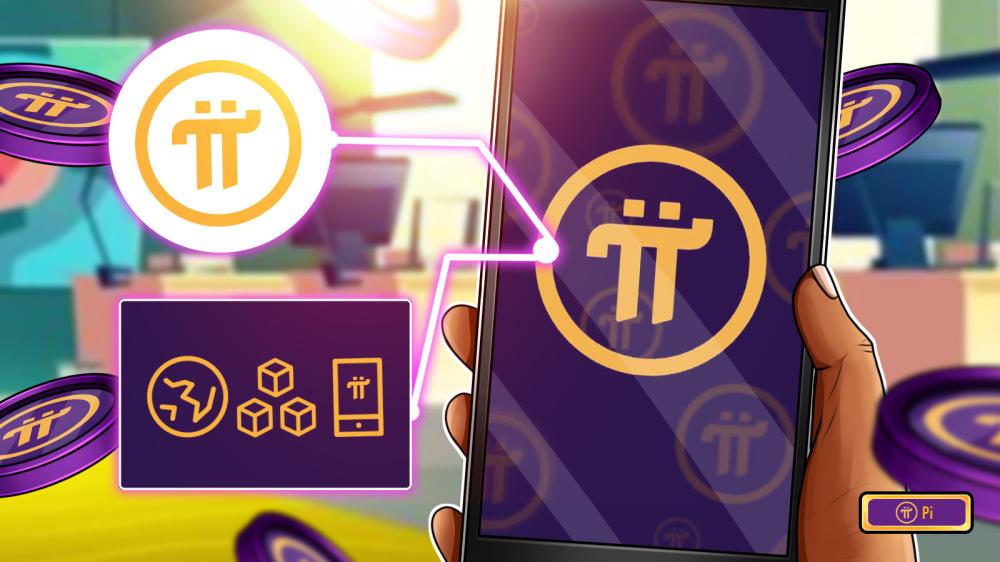If you’re looking to get into cryptocurrency, you’ve probably heard of Pi Network and Avalanche. They are two of the most popular and talked about projects in the space right now, and they have different concepts and visions.
First, let’s start with Avalanche. It is a blockchain platform with the native currency AVAX. It is a direct competitor to Ethereum, but it prioritizes scalability and transaction processing speed. AVAX is used to secure the Avalanche blockchain and pay transaction fees across the network.
Next up is Pi Network. This is a digital currency project that aims to make cryptocurrency mining accessible to everyone unlike Bitcoin that made mining difficult for anyone except those with expensive hardware or lots of spare computing power. With Pi Network, anyone can mine from their phone or desktop computer without any specialized hardware or technical know-how.
Overall, both of these projects have gained significant traction in the cryptocurrency industry and offer interesting opportunities for those looking to invest in digital assets or explore alternate blockchains.
Overview of the Similarities and Differences Between Pi Network & Avalanche
Pi Network and Avalanche can both be considered digital currency projects, but each has its own distinct approach to cryptocurrency.
Similarities
- Both Pi Network and Avalanche are platforms for building decentralized applications (dApps).
- Both Pi Network and Avalanche require users to stake coins in order to secure the network and be rewarded with more coins.
- Both networks have native tokens (Pi Coin & AVAX) that are used to pay transaction fees across the network.
Differences
- Pi is focused on making cryptocurrency mining accessible to everyone while Avalanche is focused on solving blockchain scalability challenges.
- Pi is a mobile-focused platform while Avalanche is a blockchain platform with its own set of cryptocurrencies, smart contracts, and other features.
- Pi has a stellar consensus algorithm while Avalanche has its own consensus algorithm called “Avalanche consensus”.
How Pi Network and Avalanche Use Blockchain Technology
As a digital currency, the rise of cryptocurrencies has revolutionized the way money works. Both Pi Network and Avalanche take advantage of blockchain technology to ensure secure payment transactions.
How Pi Network Uses Blockchain Technology
Pi’s network relies on an iteration of Stellars’ Consensus Protocol (SCP). This algorithm was architected by David Mazieres, a professor of Computer Science at Stanford. It implements Byzantine agreements to ensure that all updates made to the ledger are accurate and trustworthy.
Pi coin holders vote on proposed changes to the network, helping the Pi community move forward in the direction they choose.
How Avalanche Uses Blockchain Technology
Avalanche operates its own consensus mechanism, known as the Snow consensus protocol, that is intended to balance transaction speed, network capacity, decentralization, energy efficiency, and security, using Proof of Stake (PoS) as its foundation.
Avalanche also uses an advanced technology called “parallel finality gadget” which helps prevent double spends and makes sure all transactions are valid before they become part of the ledger. This technology helps increase transaction speeds while maintaining a high level of security.
The Benefits of Mining Cryptocurrency With Pi Network & Avalanche
Mining cryptocurrency can be quite a lucrative endeavor. This is why it’s important to understand the benefits of using projects such as Pi Network and Avalanche.
Pi Network
Pi Network’s main goal is to make cryptocurrency mining accessible to everyone. It does this by providing miners with an easy-to-use mobile app that can be used on any device with an internet connection. The app also pays miners in its native cryptocurrency, (Pi). $Pi has real-world value which makes it appealing to miners.
Avalanche
Avalanche is a blockchain platform that prioritizes scalability and transaction processing speed. This makes it a direct competitor to Ethereum, as the two platforms offer different features and speeds. AVAX is the native token of the Avalanche blockchain and is used to secure the network and pay transaction fees across it.
At its core, mining cryptocurrency with both Pi Network and Avalanche offer miners their own unique benefits – whether this be a higher profitability or better security for their investments – which makes these projects worth considering when deciding on a project to mine with.
The Different Uses for AVAX, the Native Token of the Avalanche Platform
- AVAX is the native token on the Avalanche platform and can be used to pay transaction fees across the network. In addition to its utility as a means of payment, AVAX has a unique feature known as “Delegated Proof-of-Stake” or “DPoS”. This feature allows AVAX holders to create validator nodes and earn rewards for processing transactions on the network.
- The rewards received when staking AVAX tokens come in two forms: block rewards and transaction fees. Block rewards are awarded to validator nodes simply for participating in the validation process, while validator nodes also receive a share of fees from each transaction processed.
- Furthermore, AVAX can be used to purchase software products from vendors who have made their products compatible with Avalanche or used to buy or sell goods and services across the platform. This makes it an incredibly versatile cryptocurrency with a variety of use cases.
Comparing Pi Network & Avalanche to Bitcoin & Ethereum
Bitcoin and Ethereum are two of the most established cryptocurrencies, and Pi Network and Avalanche are rapidly gaining attention from investors. To fully understand the potential of these two projects, it’s important to compare them to Bitcoin and Ethereum.
1. Transaction Processing Speed
Avalanche has significantly faster transaction processing speeds than both Bitcoin and Ethereum, allowing for more complex transactions to be processed in a shorter period of time. Meanwhile, Pi Network doesn’t require transaction processing since it’s a proof-of-stake (PoS) cryptocurrency.
2. Scalability
The scalability of Avalanche is also better than Bitcoin and Ethereum’s. This allows for more users to use the network without it slowing down or becoming congested. While Pi Network is still in its early stages, it promises to be able to handle millions of transactions per second when fully implemented.
3. Energy Consumption
The main difference is that Pi Network uses 80-90% less energy than both Bitcoin and Ethereum mining. This makes it much more eco-friendly than the other two cryptocurrencies.
Overall, while both projects have different visions and concepts, they can be compared in certain ways such as transaction speed, scalability, and energy consumption.
Conclusion
In conclusion, the Pi Network and Avalanche projects offer two different visions of a future powered by cryptocurrency. The Pi Network is an accessible, low-risk way for new users to enter the world of cryptocurrency, while Avalanche is a next-generation blockchain platform designed for speed and scalability. As blockchain technology continues to gain traction, it is important for users to understand the differences between the two projects, and make an informed decision on which one to invest in. With the right understanding and research, users can make the most of their investments in these two projects, and be part of the emerging blockchain revolution.















